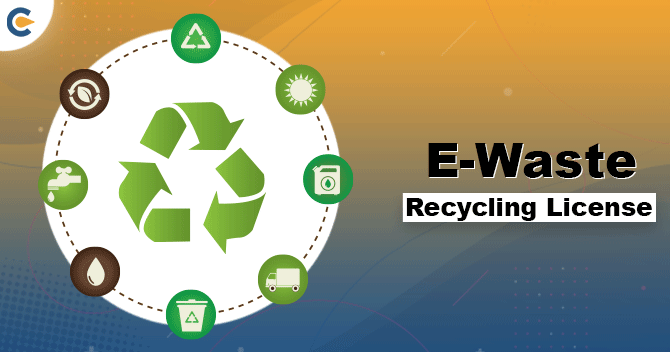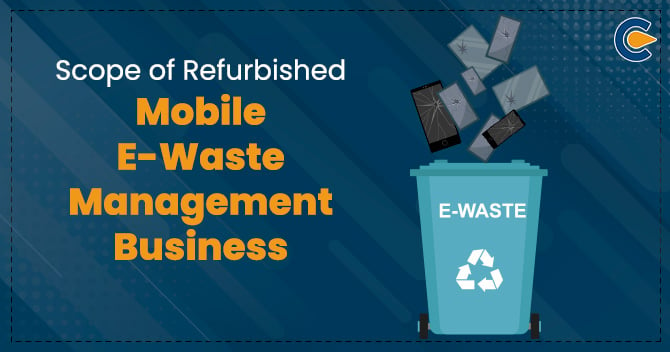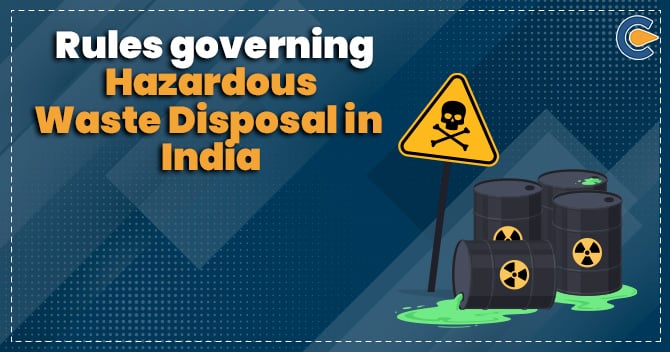In India, the electronic industry has emerged as the fastest-growing section in production and exports. Digital phone users are also growing at a mounting rate. The excessive rate of discontinuance of electronic products is a significant reason for the increased generation of e-waste. This blog will pen down the E-Waste License Recycling, its scope, and E-waste Recycling scenario.
What is E-waste Recycling?
E-waste Recycling encompasses all end-user electrical and electronic products such as desktops, smartphones, personal sound systems, including large household appliances which are not fit for their original intended use. They are very important likely for recovery, recycling, or disposal. Awareness in Recycling of E-Waste is growing nowadays and was started to prevent humans and the environment from the unfavorable effect of electronic Waste.
E-waste License Recycling Facility is an industrial functioning requiring permission from various authorities for the formation and operations of the facility. Among the multiple permissions today, environmental permits have become crucial to check environmental pollution. Such facilities shall be placed in the organized sector. However, the businesses presently working in the unofficial sector need to be upgraded or harmonized to provide a support system for the unified facility. The upgradation enables to bring the unofficial industry in the conventional activity and ease to ensure environmental compliances.
Scope of the E-Waste License Recycling
The scope of E-Waste License Recycling is to guide all those setting up e-waste recycling facilities to brief themselves with the procedures and clearances required for such a facility. E-waste is spreading severe public health and environmental issue in India. India is the “fifth-largest E-waste producer in the world.” As Estimated 2 million tons of e-waste are generated annually, and an undisclosed number of electronic products is imported from other countries worldwide. When the life of these products finishes, they account for E-Waste.
Various category electronic items contribute for E-Waste annually like-
- 70% of e-waste from Personal Computing Devices accounts,12% E-Waste for Telecom sector accounts,
- 8% from medical equipment and,
- 7% from electric equipment.
E-waste Scenario and current recycling Practices
The electronics industry[1] has become the fastest-growing section of the Indian sector in both production and exports. This shift in the IT sector started with liberalization. The start of Indian markets and a change in India’s import policies concern hardware, replacing indigenously produced hardware with imports.
The increase of electronic products, the utilization rates, and the higher discontinuance rate leads to a higher generation of e-waste. The increasing discontinuance rate of electronic products also adds to the massive import of used electronics products. Also, the e-waste generation has notable economic and social impacts, and there is also expanding growth in the e-waste recycling industry.
There is no large-scale organized e-waste recycling facility operating in India. Several small and medium-scale e-waste recycling units are distributed in the outskirt’s areas of the cities. While most of these units are in the informal sectors, some e-waste recycling units have been registered with the CPCB. There is still no large-scale organized e-waste recycling facility in India, and the entire recycling exists in the unorganized sector.
Space requirement for Recyclers in E-Waste License Recycling
As a common rule, a recycler of a capacity of 1 Ton per day shall require a minimum of 500 square meters area. Also, Authority to recyclers may be preferred if they have a minimum operational capacity of 5 MT per day with an area of about 2500 square meters.
Guidelines related to E-waste recycling License
To ensure effective implementation of E-Waste Rules and clearly describe producers’ role in EPR, MOEF, & CC, the authorities in replacement of E-Waste (Management and Handling) Rules, 2011 has notified the E-Waste (Management) Rules, 2016. These guidelines apply to every manufacturer, consumer, dismantler, and recycler of e-waste involved in manufacturing, selling, purchasing, and processing electrical and electronic equipment or components specified in Schedule – I of these Rules. Two categories of electrical and electronic equipment namely-
- IT and Telecommunication Equipment and
- Consumer Electricals, including fluorescent and other mercury-containing lamps, are covered under these Rules.
The E-Waste (Management) Rules, 2016 mandate the Central Pollution Control Board to prepare guidelines on the implementation of E-Waste Rules, which includes specific guidelines for EPR, channelization, collection centers, storage, transportation, ecologically sound dismantling and recycling, recreation, and random sampling of EEE for testing of RoHS parameters.
Concerning e-waste recycling, the Best Feasible Practices and the technologies used globally have been given in the Guidelines published by Central Pollution Control Board. However, these could be updated now and then based on the developments in the technologies and access to such technologies.
Conclusions
E-Waste License Recycling is highly automated, which requires several people to work together and consists of many steps from sorting to Water separation. Also, before establishing the plant for recycling, the occupier has to take the permit from the respective department. E-waste Recycling process work towards the sustainable disposal of e-waste to ensure a clean and healthy environment.
Read our article:Extended Producer Responsibility for the E-Waste and Plastic Waste Management











